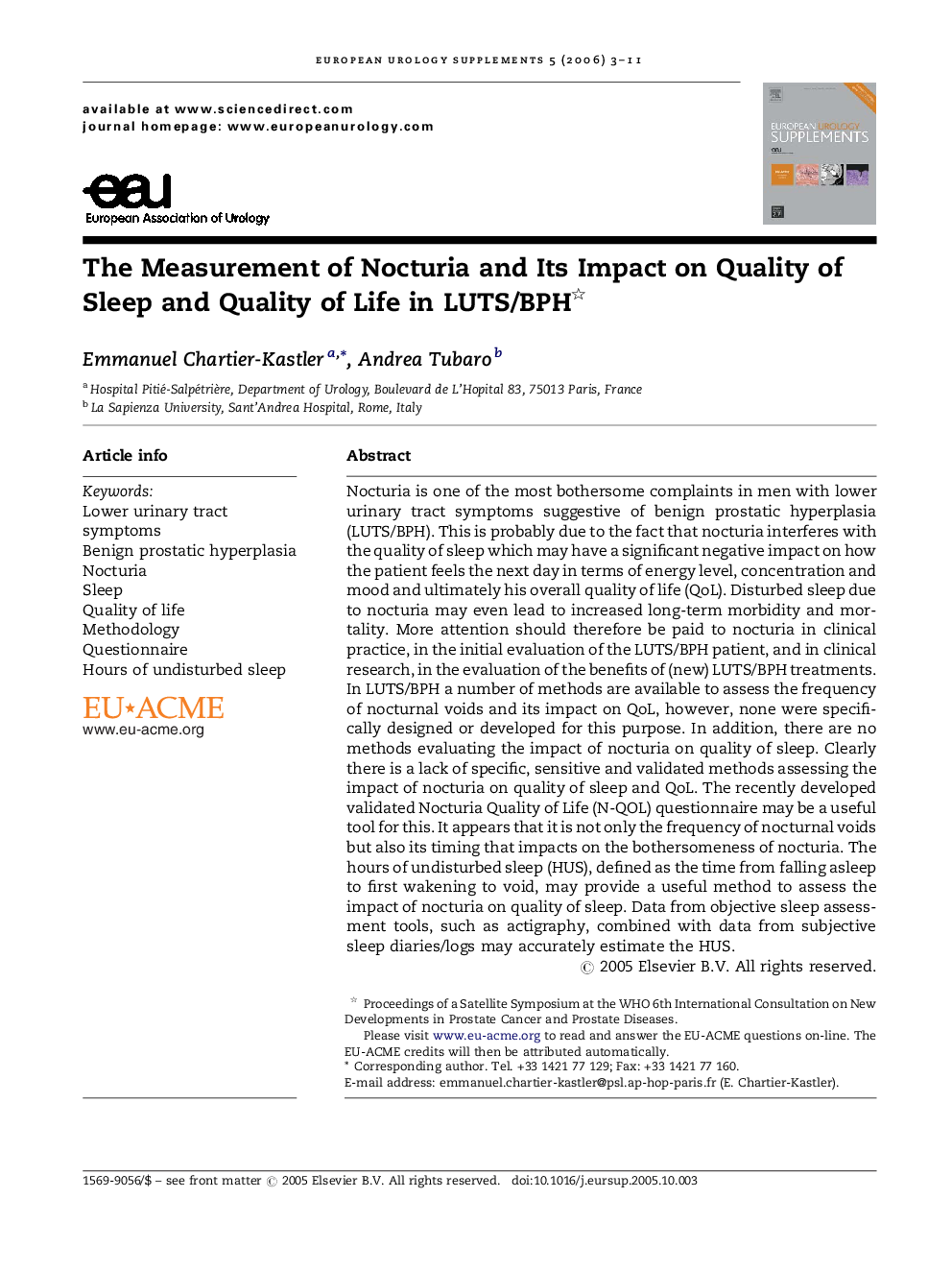| Article ID | Journal | Published Year | Pages | File Type |
|---|---|---|---|---|
| 3932065 | European Urology Supplements | 2006 | 9 Pages |
Nocturia is one of the most bothersome complaints in men with lower urinary tract symptoms suggestive of benign prostatic hyperplasia (LUTS/BPH). This is probably due to the fact that nocturia interferes with the quality of sleep which may have a significant negative impact on how the patient feels the next day in terms of energy level, concentration and mood and ultimately his overall quality of life (QoL). Disturbed sleep due to nocturia may even lead to increased long-term morbidity and mortality. More attention should therefore be paid to nocturia in clinical practice, in the initial evaluation of the LUTS/BPH patient, and in clinical research, in the evaluation of the benefits of (new) LUTS/BPH treatments. In LUTS/BPH a number of methods are available to assess the frequency of nocturnal voids and its impact on QoL, however, none were specifically designed or developed for this purpose. In addition, there are no methods evaluating the impact of nocturia on quality of sleep. Clearly there is a lack of specific, sensitive and validated methods assessing the impact of nocturia on quality of sleep and QoL. The recently developed validated Nocturia Quality of Life (N-QOL) questionnaire may be a useful tool for this. It appears that it is not only the frequency of nocturnal voids but also its timing that impacts on the bothersomeness of nocturia. The hours of undisturbed sleep (HUS), defined as the time from falling asleep to first wakening to void, may provide a useful method to assess the impact of nocturia on quality of sleep. Data from objective sleep assessment tools, such as actigraphy, combined with data from subjective sleep diaries/logs may accurately estimate the HUS.
